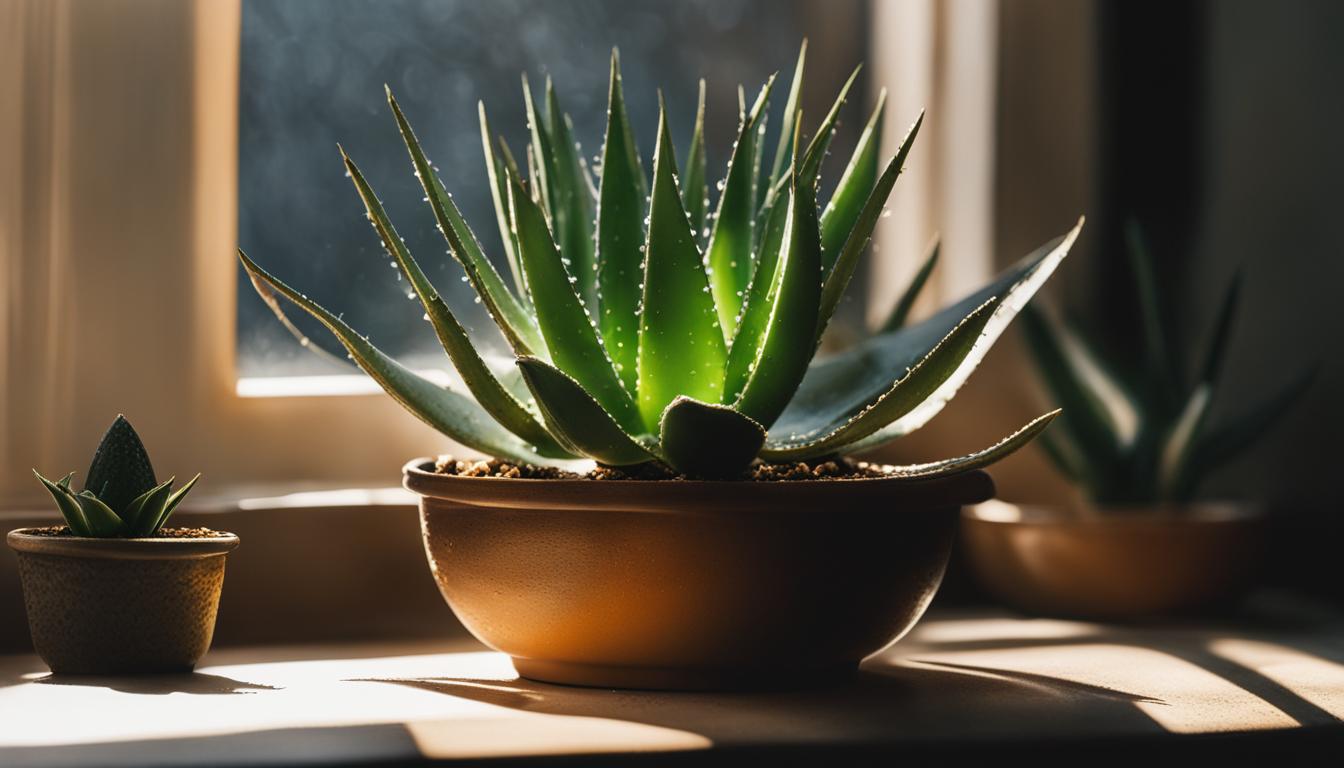
Aloe vera, also known as Aloe barbadensis miller, is a popular houseplant with fleshy lance-shaped leaves and spiky flowers. It is not only aesthetically pleasing but also renowned for its soothing gel, which is used for various skin irritations.
To keep your aloe vera plant thriving, it’s important to provide it with the right conditions. This includes bright, natural light, well-draining soil, and infrequent watering. With proper care and attention, your aloe vera plant can live for up to 12 years, providing you with its numerous benefits.
Aloe vera plant care is essential for keeping your plant healthy and thriving. Whether you’re a beginner or an experienced plant lover, this comprehensive guide will provide you with all the information you need to ensure the well-being of your aloe vera plant.
Key Takeaways
- Proper care is crucial for the health and well-being of your aloe vera plant.
- Bright, natural light and well-draining soil are essential for its growth.
- Water your aloe vera plant infrequently, allowing the soil to dry out between waterings.
- Regular pruning and occasional repotting are necessary to maintain its health and appearance.
- Aloe vera plants can be easily propagated through offsets for more plants or as thoughtful gifts.
Best Soil and Potting Mix for Aloe Vera
Aloe vera plants are known for their ability to thrive in well-draining soil. They prefer a sandy or cactus potting mix that allows excess water to flow out easily, preventing waterlogging and root rot. When choosing soil for your aloe vera plant, it is essential to consider its drainage properties.
The ideal soil pH for aloe vera is slightly acidic, around 6.0, but the plant can tolerate neutral or alkaline soils as well. To create the best potting mix for your aloe vera plant, you can either use a commercial mix formulated for succulents and cacti or make your own mixture using sand, peat moss, and perlite.
Here’s a simple recipe for a DIY aloe vera potting mix:
- Mix equal parts of sand, peat moss, and perlite.
- Ensure the mixture is well-combined and has a loose texture.
- Fill the pot with the potting mix, leaving enough space for the roots.
- Plant your aloe vera in the pot, making sure the roots are covered with soil.
- Gently press the soil around the plant to secure it in place.
Remember, aloe vera plants should be repotted when they outgrow their pots to prevent stunted growth and wilting leaves. When repotting, ensure you use a well-draining potting mix and provide proper watering after the process is complete. With the right soil and potting mix, your aloe vera plant will flourish and thrive.
Aloe Vera Soil Comparison
| Soil Type | Drainage | pH Level | Availability |
|---|---|---|---|
| Commercial Succulent/Cactus Mix | Excellent | Varies (usually slightly acidic) | Readily available at garden centers |
| Sand, Peat Moss, Perlite Mix | Good | Adjustable (can be slightly acidic) | Easy to mix at home |
| Regular Potting Mix | Poor | Varies (often neutral or slightly alkaline) | Widely available |
Proper Watering and Light Requirements for Aloe Vera
Aloe vera plants require specific care when it comes to watering and light conditions. The key to keeping your aloe vera thriving is to provide it with the right amount of water and light.
Watering Aloe Vera
One of the most important aspects of aloe vera care is watering. Aloe vera is a succulent plant that stores water in its leaves, so it is important not to overwater it. Overwatering can lead to root rot and yellowing of the leaves. It is best to allow the soil to completely dry out between waterings. Depending on the climate and the size of your pot, this can range from every two to three weeks.
When watering your aloe vera plant, make sure to thoroughly soak the soil and allow the excess water to drain out. Avoid leaving the plant sitting in a saucer of water, as this can lead to root rot. Remember, it is always better to underwater than to overwater your aloe vera.
Aloe Vera Light Requirements
Aloe vera plants thrive in bright, indirect sunlight. It is best to place your aloe vera near a window with adequate light, but be cautious of direct sunlight. Too much direct sun can cause the leaves to burn and damage the plant. If your aloe vera is not receiving enough light, it may become leggy and pale.
Keep in mind that aloe vera can tolerate some shade, but it still needs a decent amount of light to thrive. If you notice that your aloe vera is stretching towards the light, it is a sign that it needs more sunlight. Consider adjusting its placement to ensure it gets the right amount of light.
- Water your aloe vera plant infrequently, allowing the soil to completely dry out between waterings.
- Avoid overwatering, as it can lead to root rot and yellowing of the leaves.
- Place your aloe vera in bright, indirect sunlight, avoiding direct sun exposure.
- Monitor the light conditions and adjust the plant’s placement if necessary to ensure it gets enough light.
| Watering | Light |
|---|---|
| Infrequent watering, allowing soil to dry out between waterings | Bright, indirect sunlight |
| Avoid overwatering to prevent root rot | Avoid direct sunlight to prevent leaf burn |
| Thoroughly soak soil when watering | Monitor light conditions and adjust placement if needed |
By following these watering and light requirements, you can ensure that your aloe vera plant remains healthy and thrives in its environment.

Pruning, Propagation, and Repotting Aloe Vera
Proper care and maintenance of your aloe vera plant include pruning, propagation, and repotting. By following these essential steps, you can ensure the health and longevity of your plant.
Pruning Aloe Vera
Regular pruning is necessary to remove dead or damaged leaves and promote overall plant health. When pruning your aloe vera plant, use clean and sharp shears to make a clean cut at the base of the leaf. Avoid cutting into the central stem of the plant, as this can lead to infection or damage. Pruning not only improves the plant’s appearance but also stimulates new growth.
Propagating Aloe Vera
Aloe vera is an easy plant to propagate, and it reproduces through offsets or pups that develop at the base of the plant. To propagate, carefully remove the offset from the mother plant using a clean knife or shears. Allow the offset to dry for a few days to let the wound heal.
Once dry, plant the offset in a well-draining potting mix, ensuring that the roots are covered. Water lightly and place the new plant in a bright location, away from direct sunlight. With proper care, the offset will establish roots and grow into a new aloe vera plant.
Repotting Aloe Vera
Repotting your aloe vera plant is necessary when the plant becomes root-bound or when the pups or offsets overcrowd the pot. Choose a pot that is slightly larger than the current one and has proper drainage holes. Prepare a well-draining potting mix by combining sand, peat moss, and perlite.
Gently remove the plant from its current pot, taking care not to damage the roots. Place the plant in the new pot, ensuring that the soil level remains the same. Water lightly after repotting and place the plant in a location with bright, indirect light.
Pruning, propagation, and repotting are essential aspects of aloe vera care. By pruning your plant, you can remove dead leaves and stimulate new growth. Propagation allows you to create new plants from offsets or pups, while repotting ensures that the plant has enough space to grow and thrive. Incorporate these practices into your aloe vera care routine to keep your plant healthy and vibrant.
Taking care of your aloe vera plant is relatively simple and can be a rewarding experience. By following a few key tips and techniques, you can ensure that your plant thrives and stays healthy for years to come.
First and foremost, providing your aloe vera plant with the right conditions is crucial. This includes placing it in a spot with bright, indirect light, as direct sun can damage the tender leaves. Additionally, using well-draining soil or a cactus potting mix will help prevent overwatering and root rot.
When it comes to watering, it’s important to remember that aloe vera plants prefer less frequent watering. Allowing the soil to completely dry out between waterings will prevent the risk of overwatering and keep your plant happy. It’s also worth noting that aloe vera plants can tolerate dry air and do not require additional humidity.
Lastly, proper pruning, propagation, and repotting techniques are essential for maintaining the health and appearance of your aloe vera plant. Regularly removing dead or damaged leaves through pruning will help keep your plant looking neat and tidy.
Propagation can be done through offsets, which can be separated and replanted to create new plants. And when your plant becomes root bound or overcrowded, it’s time to repot it in a larger container with fresh soil.
With these aloe vera care tips in mind, you’ll be able to enjoy the beauty and benefits of this remarkable plant for years to come. So go ahead, give it a try, and watch your aloe vera plant thrive!
After reading this, check out our other articles on:
- Jade Plant Care: Your Go-To Guide with Tips and Tricks
- ZZ Plant Care and Growth Tips: Beginner’s Guide
FAQ
How often should I water my aloe vera plant?
Aloe vera plants should be watered infrequently, allowing the soil to completely dry out between waterings. Overwatering can lead to root rot and yellowing of leaves.
What type of soil is best for aloe vera?
Aloe vera thrives in well-draining soil and prefers a sandy or cactus potting mix. A commercial potting mix made specifically for succulents and cacti can be used or a mixture of sand, peat moss, and perlite can be created.
How much sunlight does aloe vera need?
Aloe vera prefers bright, indirect sunlight. It should be placed in a window with adequate light. Direct sun can cause sunburn and damage the tender skin of the plant.
Can I propagate my aloe vera plant?
Yes, aloe vera can be easily propagated through offsets or pups that develop at the base of the plant. These can be separated and replanted in a new pot or given as gifts.
When should I prune my aloe vera plant?
Aloe vera plants require occasional pruning to remove dead or damaged leaves and maintain a neat appearance. Pruning should be done at the base of the leaf, and care should be taken to not cut into the center of the plant.
How often should I repot my aloe vera plant?
Aloe vera plants should be repotted when they outgrow their pots to prevent stunted growth and wilting leaves. Repotting should also be done when the pups, or offsets, become overcrowded. A well-draining potting mix and proper watering after repotting are crucial for the plant’s health.
Does aloe vera cause cancer?
Orally ingested aloe vera leaf extract was listed among the known chemicals that cause cancer and reproductive toxicity. Using aloe vera extract on the skin, however, is generally considered safe.

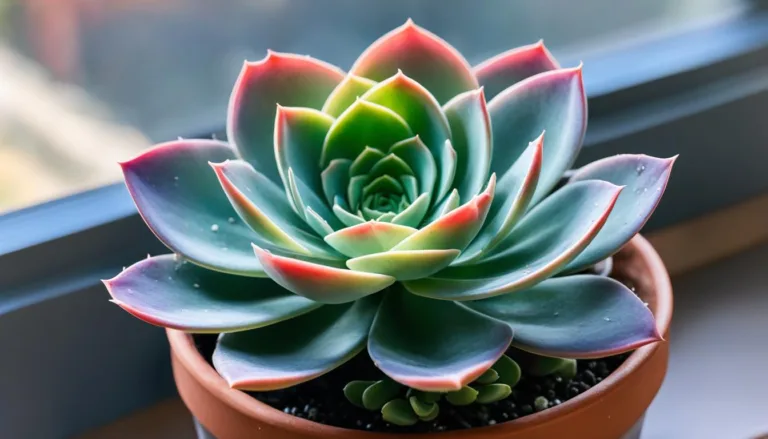
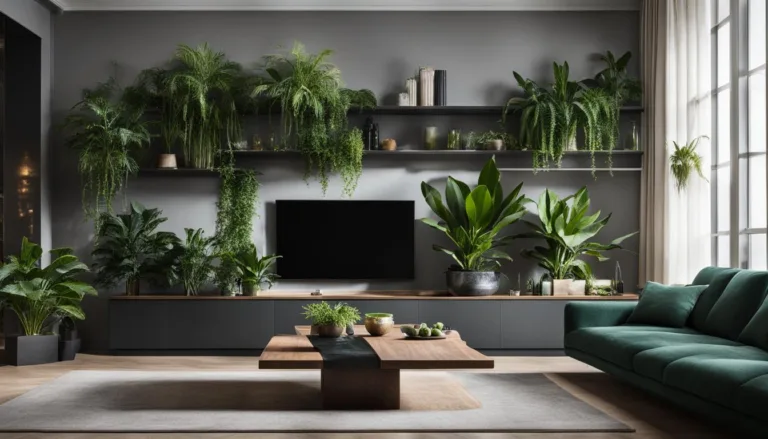
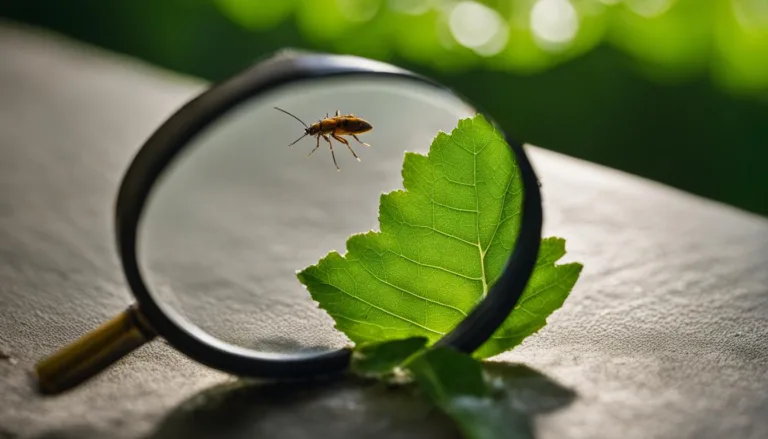

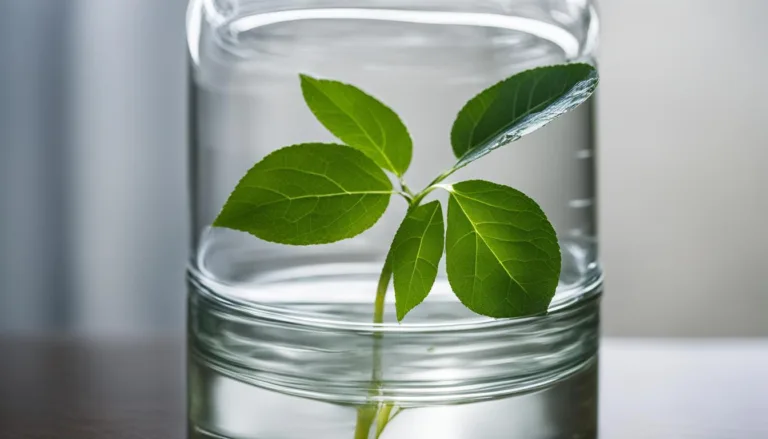

2 Comments
Comments are closed.